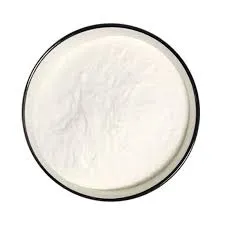
តុលា . 12, 2024 20:44 Back to list
Understanding Redispersible Polymer Powder and Its Applications in Construction and Other Industries
Understanding Redispersible Polymer Powder Properties, Applications, and Benefits
Redispersible polymer powders (RDPs) are a fascinating and versatile class of materials that have gained significant attention in various industries, particularly in construction, adhesives, coatings, and pharmaceuticals. These powders consist of synthetic polymers that are initially dried into a powder form and can be re-dispersed in water, forming a stable or semi-stable emulsion. This unique ability to revert back to a liquid form upon hydration makes them extremely valuable for numerous applications.
Composition and Production
Redispersible polymer powders are typically produced from polymers such as vinyl acetate, ethylene, and styrene, among others. The production process generally involves emulsifying the polymer in water, followed by a drying process, often spray drying, that turns the liquid emulsion into a free-flowing powder. The resulting RDP retains the properties of the original polymer, allowing for a wide range of functionalities depending on the specific polymer used.
Properties of Redispersible Polymer Powders
One of the most desirable properties of RDPs is their ability to improve the performance of building materials. When added to cement-based products, they enhance flexibility, adhesion, water resistance, and durability. Furthermore, they can improve the workability of the mixture, making it easier to apply and manipulate during construction. Other notable properties include improved resistance to cracking and deformation, which is crucial in maintaining the integrity of the structure over time.
Applications in the Construction Industry
In construction, RDPs are commonly used in a variety of applications, primarily in tile adhesives, dry-mix mortars, self-leveling compounds, and renders. Their inclusion in these products helps create a more effective and resilient bonding agent, contributing significantly to the overall performance of the application. For instance, in tile adhesives, RDPs ensure that the adhesive remains pliable long enough for proper installation and curing.
Additionally, redispersible polymer powders allow for the development of lightweight and thin-layer systems, which can reduce the overall weight of building materials while still providing robust performance
. Their compatibility with various additives and fillers further enhances their utility in formulating high-performance construction materials.redispersible polymer powder wiki

Benefits of Using RDPs
The benefits associated with redispersible polymer powders are numerous. One of the primary advantages is their economic feasibility. By improving the functionality of construction materials, RDPs can lead to cost savings in material usage and labor. Enhanced flexibility and adhesion properties can result in fewer repairs and maintenance issues down the road, ultimately leading to longer-lasting results and decreased lifecycle costs.
Moreover, RDPs contribute to sustainable building practices, as many formulations can be designed to be environmentally friendly. With a focus on reducing solvents and hazardous chemicals, the use of water-based RDPs aligns with green building initiatives by minimizing the carbon footprint.
Pharmaceutical and Adhesive Applications
Beyond construction, RDPs find applications in the pharmaceutical industry, particularly in drug formulation and delivery systems. Their ability to form stable dispersions can help in encapsulating active ingredients, leading to controlled-release formulations. Their biocompatibility and versatility also make them suitable for various drug delivery methods.
In the adhesive industry, RDPs enhance the performance characteristics of adhesives by improving bonding strength and providing flexibility. This is essential in industries like automotive, woodworking, and packaging, where performance under different conditions can significantly affect the end product’s reliability.
Conclusion
Redispersible polymer powders represent a significant innovation in materials science, offering a multitude of benefits across various industries. Their unique properties, such as the ability to improve bonding, flexibility, and durability, make them a valuable addition to construction materials, pharmaceuticals, and adhesives. As demand for high-performance, sustainable materials continues to grow, RDPs are poised to play an increasingly important role in meeting these needs while providing economic and environmental benefits. Understanding their properties and applications can lead to better material choices and innovative solutions in manufacturing and construction practices.
-
The Widespread Application of Redispersible Powder in Construction and Building Materials
NewsMay.16,2025
-
The Widespread Application of Hpmc in the Detergent Industry
NewsMay.16,2025
-
The Main Applications of Hydroxyethyl Cellulose in Paints and Coatings
NewsMay.16,2025
-
Mortar Bonding Agent: the Key to Enhancing the Adhesion Between New and Old Mortar Layers and Between Mortar and Different Substrates
NewsMay.16,2025
-
HPMC: Application as a thickener and excipient
NewsMay.16,2025
-
Hec Cellulose Cellulose: Multi functional dispersants and high-efficiency thickeners
NewsMay.16,2025







